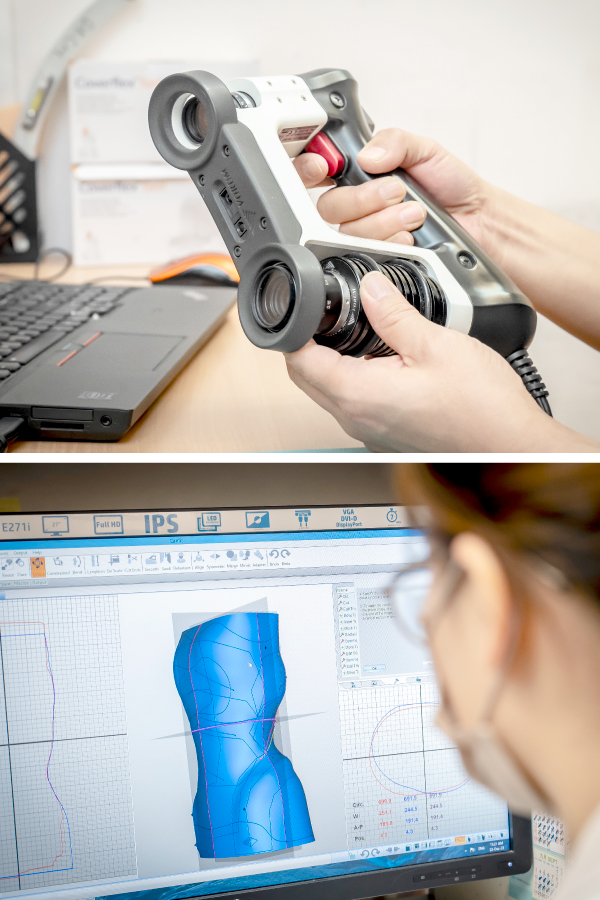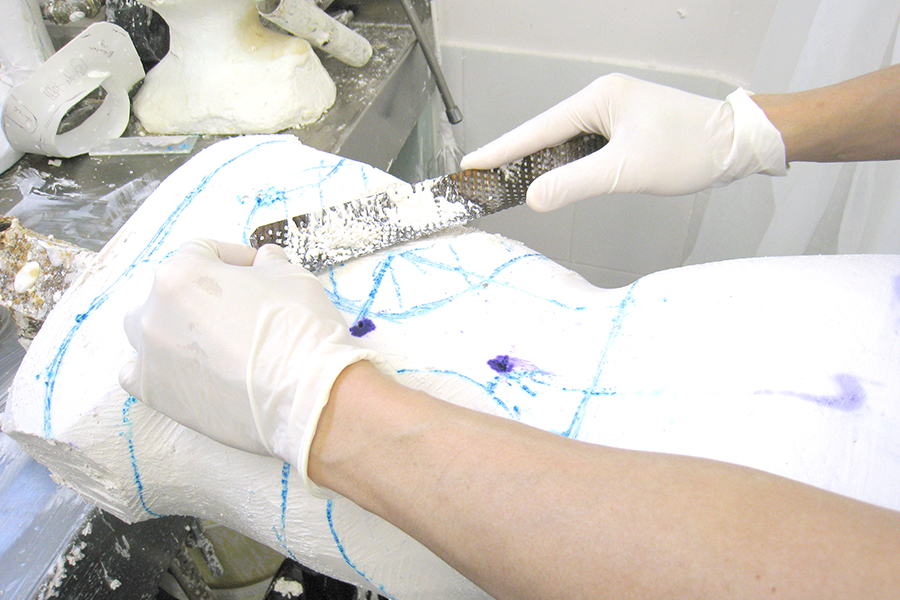Computer-aided design for spinal braces

Computer-aided design system
Functions and advantages: Prosthetist-Orthotist designs spinal braces on a computer – optical scanner for body image capturing and computer-aided design (CAD) software to perform brace design. It allows precise design of spinal braces and digital data management.A conservative brace treatment is generally prescribed to control curve progression in adolescent idiopathic scoliosis with curvature angle greater than 20°. The long-standing practice for making a tailor-made spinal brace starts with using the low-temperature thermoplastics to wrap patient’s body to obtain the mold. The process takes more than 20 minutes. Then pour the plaster to the cast, and modify it manually by adding or removing the plaster (photo below). This requires time and material consumption.
 The Duchess of Kent Children’s Hospital in Sandy Bay (DKCH) introduced CAD in 2016 which allows the body shape to be captured in short time and produces more accurate data. Prosthetic and Orthotic Department in charge at DKCH Chloe Chu explains, “instead of performing hand casting, we now use the handheld optical scanner to acquire the trunk surface profile just in few minutes. We can perform the brace design work by using the CAD software. Traditional brace fabrication involves lots of craftsmanship and now the CAD system has minimised errors and all the design steps can be measurable and reversible which facilitates the designing work.” As most patients are young people and teenagers who will grow within a short period of time, the computer records design and data to allow for fine-tuning and making it quicker to produce new braces to adapt patients’ specific need. There are other benefits to CAD, points out Advanced Practice Prosthetist and Orthotist Vincent Yeng. “Previously, we had to handle a one-to-one human body size plaster model, which weighed between 18 and 30 kilograms,” he says. “The rectification and lifting of these models took a lot of manpower and physical exertion and the process was riskier. Now, we do the design on computer. It is safer in terms of occupational safety and health. In addition, the digitised data can be used for medical research to help other patients suffering from scoliosis.”
The Duchess of Kent Children’s Hospital in Sandy Bay (DKCH) introduced CAD in 2016 which allows the body shape to be captured in short time and produces more accurate data. Prosthetic and Orthotic Department in charge at DKCH Chloe Chu explains, “instead of performing hand casting, we now use the handheld optical scanner to acquire the trunk surface profile just in few minutes. We can perform the brace design work by using the CAD software. Traditional brace fabrication involves lots of craftsmanship and now the CAD system has minimised errors and all the design steps can be measurable and reversible which facilitates the designing work.” As most patients are young people and teenagers who will grow within a short period of time, the computer records design and data to allow for fine-tuning and making it quicker to produce new braces to adapt patients’ specific need. There are other benefits to CAD, points out Advanced Practice Prosthetist and Orthotist Vincent Yeng. “Previously, we had to handle a one-to-one human body size plaster model, which weighed between 18 and 30 kilograms,” he says. “The rectification and lifting of these models took a lot of manpower and physical exertion and the process was riskier. Now, we do the design on computer. It is safer in terms of occupational safety and health. In addition, the digitised data can be used for medical research to help other patients suffering from scoliosis.”